#Class: Scyphozoa
Explore tagged Tumblr posts
Text



Range: Atlantic, Arctic, Pacific, & Indian Oceans
179 notes
·
View notes
Text
Final Results:
44 favorites (220 points)
130 loves (390 points)
53 likes (53 points)
8 neutrals
4 dislikes (-4 points)
1 hates (-3 points)
Eutardigrada recieves
656 points
tying them for first place with Scyphozoa!
This is a redemption round, and groups must recieve at least 853 points to move forward to the next round. If no class earns over 853 points this round, only the single most top-rated class will move forward (or, I guess, in this case, if there’s a tie… the two most top-rated classes?)
Remember to reblog your favs, as this tournament relies on number of votes, not percentages!
Did you miss any polls? Check the tag #/Animal Polls before it’s too late!
Round 2.5 - Tardigrada - Eutardigrada
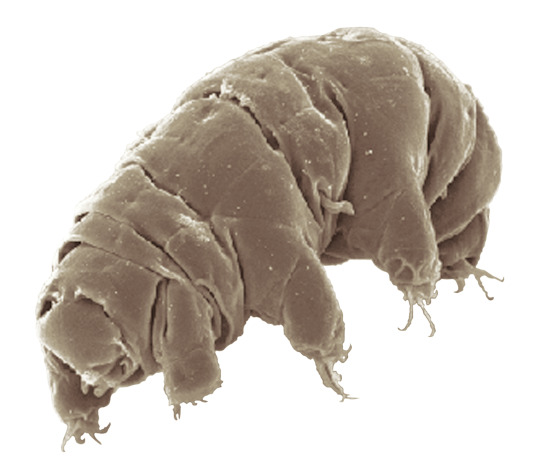
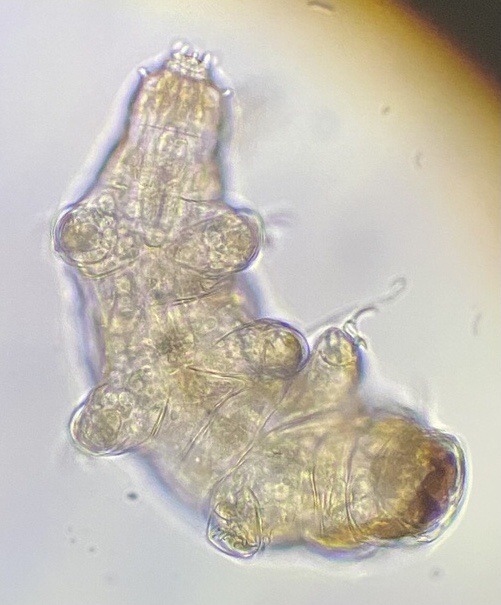

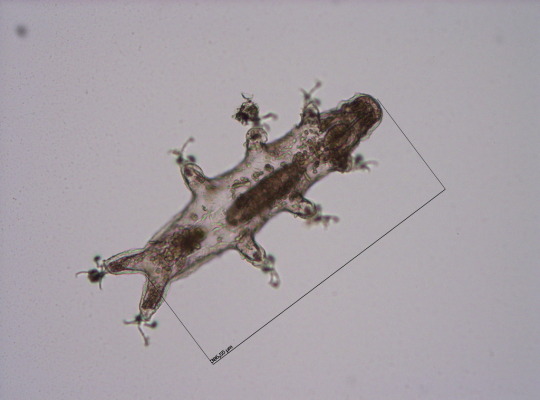
(Sources - 1, 2, 3, 4)
One of two classes of tardigrades, Eutardigrada (“Smooth-bodied Tardigrades”) consists of the orders Apochela and Parachela.
When you picture a tardigrade, it is probably a eutardigrade. Eutardigrada contains the most species of the two tardigrade classes. Most of them are terrestrial, though some are adapted to a freshwater or marine habitat. As opposed to heterotardigrades, eutardigrades are smooth and sausage-shaped, and lack external sensory organs. Their claws are combined into double claws or aligned in two rows.
Most of the scientific study on the survivability of tardigrades has been done on eutardigrades. They are known for their extreme resilience, being able to survive extreme temperatures and pressures, air deprivation, radiation, dehydration, starvation, and even exposure to outer space. However, they prefer to just live in mosses, lichens, and sediments, munching away on plant cells, algae, bacteria, or small invertebrates (including smaller tardigrade species; that’s not cannibalism btw, plenty of chordates eat other chordate species!) They are not considered extremophiles though, as they are not adapted to exploit extreme environments, only to endure them. They do this by going dormant in harsh environments, for up to 30 years, only to rehydrate and continue living when conditions are safer!
Members of Eutardigrada have been around since at least the Middle Cretaceous. The oldest known living species are Beorn leggi and Aerobius dactylus, which have existed since the Late Cretaceous!
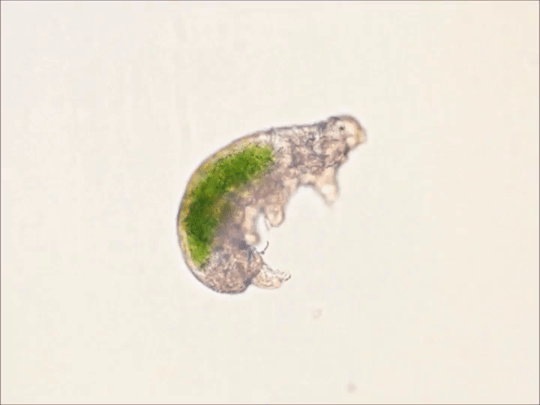
#poll results#ngl this was /so close/ to overtaking Scyphozoa and I have nothing against tardigrades but they’re not#QUITE as diverse so I would have been a little disappointed if they were the only ones to be redeemed#since I did this round just to add like one more dash of spice to Round 3 lol#anyway I did the math and these might be our winners unless the last three classes can get a bunch more votes in the next three days!
76 notes
·
View notes
Text
Basking in the breathtaking beauty of our inner space 🌟
This crimson jellyfish, Paraphyllina sp., uses the color red to camouflage itself in the deep sea. Because wavelengths of light in the red end of the spectrum are preferentially absorbed by seawater, red animals disappear into the darkness of the deep ocean. This enables them to ambush unsuspecting prey or avoid a hungry predator. The red pigment may also help to mask any bioluminescent prey that it has eaten.⠀ ⠀ Jellies in the class Scyphozoa include most of the species that people think of when hearing the word “jellyfish.” These "true jellies" are commonly studied at the sea surface, but those living deep in the water column are less well known. We are still just learning what species thrive in the dark depths of our ocean and how they live and reproduce. Exploration with ROVs allows us to see these enigmatic animals in their habitat and gives us a better understanding of their ecology.
1K notes
·
View notes
Note
Placental jellyfish
Is it a placenta? Is it a jellyfish? NO! YES!
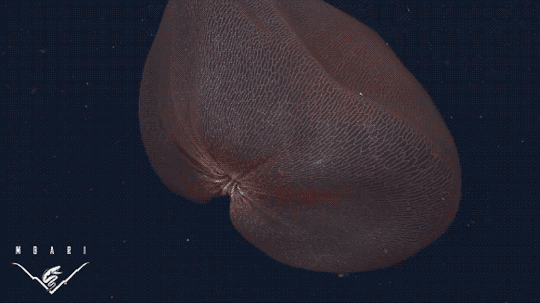
Deepstaria enigmatica, family Ulmaridae, order Semaeostomeae, class Scyphozoa
Usually found in Antarctic and near-Antarctic seas, but have been found in the Atlantic as far South as the Gulf of Mexico.
Usually found at depths of 600–1,750 m (1,970–5,740 ft).
This species is known to have symbiotic (possibly parasitic) isopods living in their bells.
Find out more:
Solving the Mystery of the Placental Jellyfish | Deep Sea News
Deepstaria enigmatica - Wikipedia
Better and New Video of the Enigmatic Placental Jellyfish | Deep Sea News
276 notes
·
View notes
Text
Wet Beast Wednesday: box jellyfish
Jellyfish are curious things, but some are curiouser than others. Most jellyfish are members of the class Scyphozoa, which is a very diverse clade with plenty of jellies to choose from. But then there are the Cubozoa, a separate class of jellyfish that have a lot of interesting and unique features, such as being some of the most venomous animals in the world. Try not to get stung.

(Image: a box jellyfish. It is a mostly translucent jellyfish with a box-shaped bell. From the corners of the bell hand four tentacles that are a striped white and orange. End ID)
Like the Scyphozoa, the approximately 50 known species of box jellyfish have a body plan consisting of a bell and trailing tentacles. While the Scyphozoa have round bells, box jellyfish have cuboid bells, which give them their name. At each lower corner of the bell is a stalk that leads into one or more tentacles. The interior of the bell is divided into four regions by structures called septa. In each region is a gastric pocket that helps direct food into the central stomach and has structures that help water flow into and out of the animal. Each septa is lined with digestive filaments and two of the jellyfish's eight gonads. In the center of the bell is a flexible, trunk-like appendage called the manubrium which contains the mouth and stomach. When thebox jellyfish eats, it draws prey into the one of the septa where the digestive filaments begin digestion. The manubrium then maneuvers the mouth over to the prey and eats it. Prey is captured with the tentacles, which are lined with stinging cells called cnidocytes which contain structures called nematocysts that inject venom into prey and threats. The tentacles then help move the food into the bell. While Scyphozoa come in a variety of colors, box jellyfish are almost always translucent.

(Image: a box jellyfish, this one having a squatter bell and multiple tentacles at each corner. The manubrium is visible through the bell as a curving, trunk-like structure. End ID)
Box jellyfish have a developed nervous system consisting of two portions: the nerve ring and the rhopalia. The ring nerve stretches around the base of the bell and controls how it moves. The rhopalia is a system of nerves that controls sensory structures. In particular, it controls a sense of gravity and the eyes. While some Scyphozoa have simple light-sensing eyes, the box jellyfish have true eyes with retinas, corneas, and lenses. Like the bell, the rhopalium is divided int four segments. Each segment has two true eyes as well as two simple pit eyes for detecting light levels and two simple slit eyes that likely detect movement. The true eyes can be oriented in different directions and they always appear to keep one pair pointing up. Thanks to their good eyesight and the shape of the bell allowing for rapid bursts of speed, the box jellyfish can actively hunt its prey instead of just drifting and waiting for food to come to them. What's more impressive is their ability to actively navigate their environment and learn to avoid certain threats. It was long thought that animals without brains would not be able to truly learn, but multiple types of cnidarians have shown learning behavior, with the box jellyfish seeming to be the most advanced.
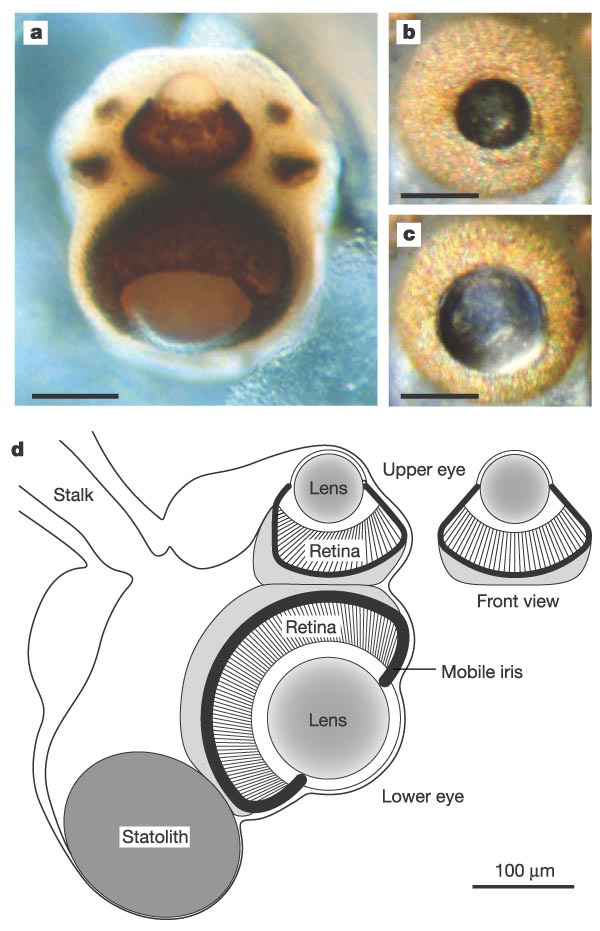
(Image: a scientific diagram showing pictures of a box jellyfish eye and a drawing of its anatomy. End ID. Source)
Box jellyfish reproduce every year and are semelparous, meaning they only mate once before dying. However, there is some inconclusive evidence that the species Chiropsalmus quadrumanus may be able to mate multiple times. Reproduction can be both internal and external depending on species. In external reproduction, the male and female release gametes into the water. In internal reproduction, the pair will maneuver themselves so the openings of their bells face each other and the male will pass a packet of sperm to the female. In these species, the female retains the eggs internally until they hatch. The juveniles hatch as a type of swimming larva called a planua. The planua will eventually settle and become fixed to a hard surface, metamorphosing into a polyp. The polyp is a non-swimming stage found in all members of the clade Medusuzoa, of which the box jellyfish are a member. Polyps will grow for months to years and during this period, they can reproduce asexually by budding off clones of themselves. Eventually, the polyps will metamorphose into the adult medusa stage

(Image: photos of a box jellyfish at different stages of its life cycle. It starts as a bean-shaped planula, progresses to a worm-like creeping polyp, then to an anemone-like sedentary polyp, then to a newly released medusa, which looks like a tentacle-less box jellyfish. The medusa them matures to a small juvenile and finally a mature adult. end ID)
Box jellyfish are found worldwide in tropical waters, though most known species are from the Indo-Pacific. It is likely that many species ave been overlooked as their transparency and frequently small size makes it easy to miss them. New studies using e-DNA, DNA that is shed and collected through the environment, may help identify nee species and populations. Box jellyfish are known to most people as being some of the most venomous animals in the world, but only a few species are dangerous to humans. The species Chironex fleckeri is the most dangerous to humans. Its venom causes extreme pain and can lead to death within 2-5 minutes if enough venom enters the system. C. fleckeri has caused over 60 recorded deaths in Australia (because where else would it live?) and while there is now an antidote to the venom, getting it to the victim fast enough can be challenging. A singe C. fleckeri is often said to carry enough venom to kill 60 people. Most reported cases of stings have not ended in death as not enough venom was introduced to the system. Also from Australia (of course) are the Irukandji, a group of about 16 similar box jellyfish that can also be lethal, but while C. fleckeri at least has the decency to be big, the Irukandji jellyfish are all tiny. Their venom causes a reaction called Irukandji syndrome that is delayed for up to 2 hours after the sting and can lead to cardiac arrest if not treated. Jellyfish nets are common sights on Australian beaches. They enclose parts of the water with nets that have mesh small enough to keep most jellyfish out. Application of vinegar to the sting is the current recommended treatment and many beaches in Australia are required to stock it, though some research has indicated that vinegar may actually make the sting worse.

(Gif: footage of the rare spotted box jellyfish. It has a large bell with stripes and rings on it and the tentacles are thick and reddish. It is swimming, showing off the movement of the bell in how it propels itself. End ID)
#wet beast wednesday#I wanted to make a fakemon based on these for my australia region#but couldn't think of anything that tentacruel and nihilego haven't covered already#box jellyfish#jellyfish#cubozoa#medusozoa#cnidarian#invertebrates#invertblr#venomous#marine biology#biology#ecology#zoology#animal facts#educational#informative#image described
182 notes
·
View notes
Text
Fish of the Day
Today's fish of the day is the flower hat jelly!
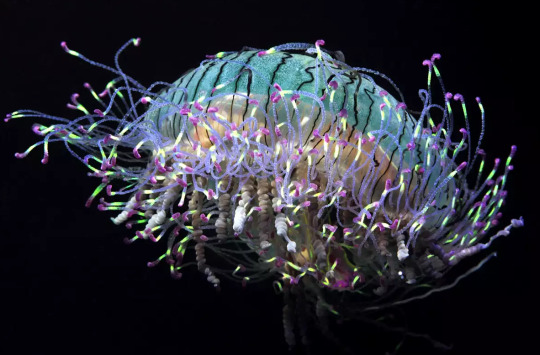
The flower hat jelly, scientific name Olindias formosus, is a small and rare jelly known for the multicolored tentacles and luminescent display. Belonging to the hydrozoa family, the flower hat jelly is not actually a true jellyfish. The main difference between them being that true jellyfish belong to the Scyphozoa class, and have a life cycle defined by a longer period as a medusa (their adult form) whereas hydrozoans have a lifecycle primarily defined by their polyp or juvenile stages, sometimes even lacking medusa forms, a pattern that can once again be found in the flower hat jelly's life cycle. Their distribution is off the coastline of Japan, Korea, and countries within Oceania. Although some believe that these jelly's can also be found outside of Argentina, and Brazil, it is thought this may be a close relative, Olindias sambaquiensis. With a depth range from sea level down to 55m of depth, these jellyfish tend to live near the ocean floor where they can hide among kelps, sea grasses, and loose rocky bottoms.

Living a nocturnal life, the flower hat jelly spends its days hiding on the ocean floor. But, once dusk arrives this jelly rises from its hiding places to capture small fishes within its tentacles, paralyzing and or killing the fish, before drawing the corpse up into the bell to be consumed. The stings from this jelly are painful, and at least one fatality has been recorded from them in Japan. These tentacles hold most of the intrigue of the flower hat jelly. The length of the tentacles may appear to be random, but has been found to be arranged mathematically in an optimization hashing algorithm known as fibonacci hashing. Length aside however, these jelly's, and especially their tentacles contain fluorescent proteins, which are used to attract prey when hunting, and are particularly bright under blacklight. This protein is uniquely interesting due to its use in helping treat some COVID cases, as it can be used as an inhibitor, stopping the replication of the disease, and slowing or halting its spread.

The reproduction and younger stages of the flower hat jellyfish were a mystery for many years, but in 2012 the Monterey Bay Aquarium managed to be the first to breed them in captivity, capturing a full lifecycle from larvae to polyp to medusa. Beginning as polyps attached to a hard surface along the seabed, where they are completely stationary, surviving off of a single active tentacle, which is waved back and forth to gather nutrients, forming a medusae and releasing them only once a size of 1mm was achieved. Then they will mature into juvenile medusa, which are identical to adult medusa in appearance and behavior, only being identifiable by their smaller size and less tentacles. Juvenile medusa only being around 2-20mm, and adults getting only as large as 6inches total throughout their lifespan. Adult flower hat jellies are only observed in the months of December-July with peaks in the months of May and April. However, we understand very little about how these jelly's sexually breed in the wild, but fertilization occurs externally, as gametes are released into the water to create small, non-cooperative colonies along similar areas. These animals live only 4-6 months as adults, and only around a year total before slowly losing their fluorescence and passing away.

That's the flower hat jelly, everybody, have a wonderful Tuesday!
#ish#fish of the day#fishblr#fishposting#aquatic biology#marine biology#freshwater#freshwater fish#animal facts#animal#animals#fishes#informative#education#aquatic#aquatic life#nature#river#ocean#fish#jellyfish#jelly#flower hat jelly#hydrozoan
136 notes
·
View notes
Text
i've decided to make a second poll to this one about which animal would fix you if you became one. so im going to make everyone choose between different types of cnidaria. we may keep going on and on forever it depends
go wild my friends. theres definitely no bias in these polls btw. i am not biased in my poll making

#eddie in the ocean#marine biology shitpost#marine biology#cnidaria#tumblr poll#gif#jellyfish#posting this on the therian website once more
54 notes
·
View notes
Text
Flowerhat jellyfish
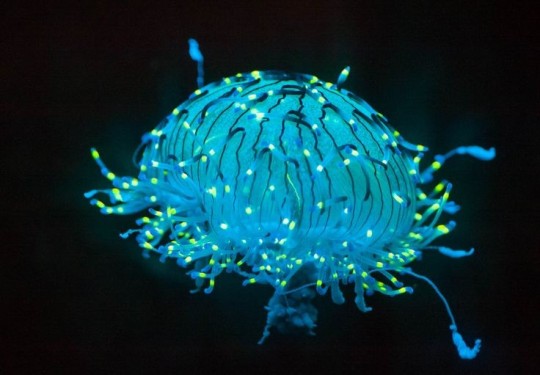

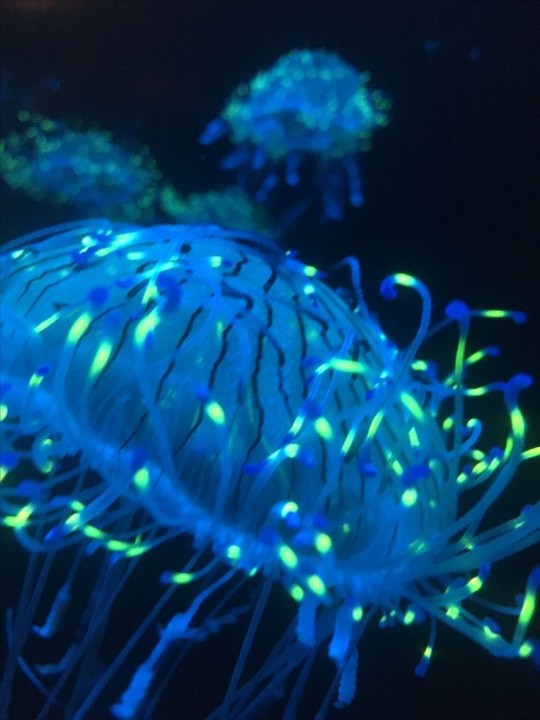

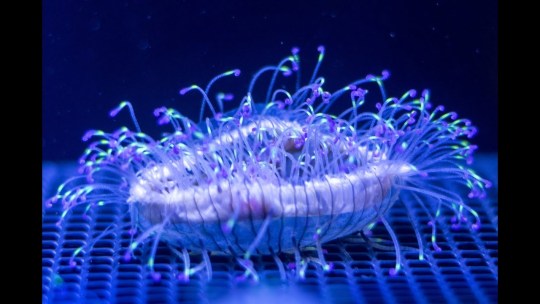
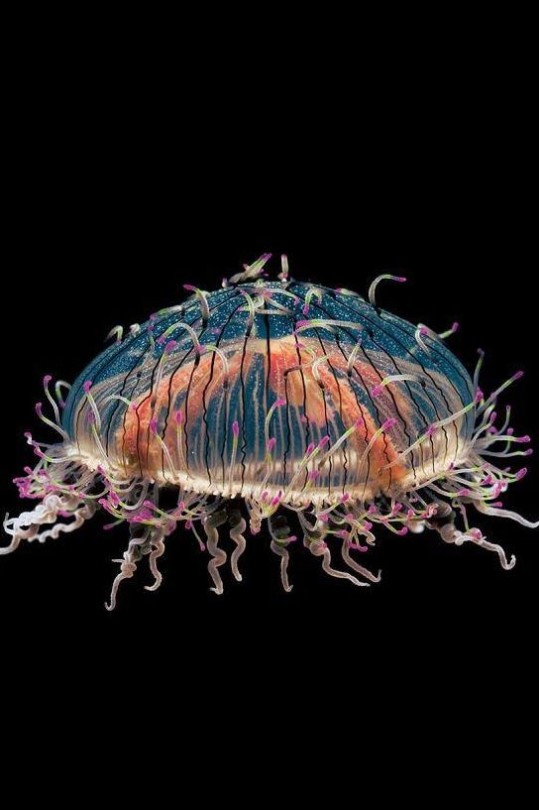

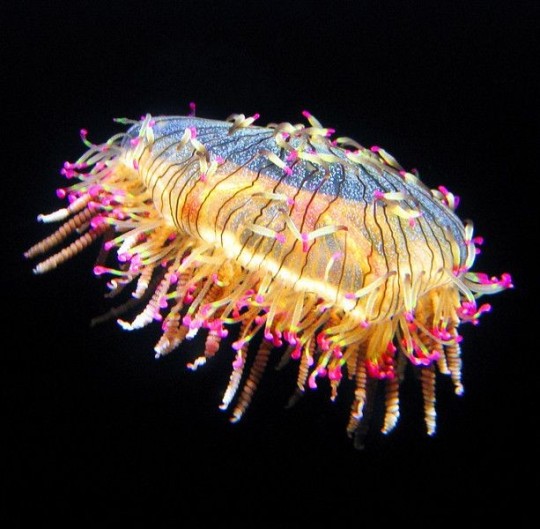
The flower hat jelly (Olindias formosus) is a species of hydromedusa in the hydrozoan family Olindiidae. Although they look like a jellyfish, they actually belong in the class Hydrozoa, while true jellyfish belong in class Scyphozoa. Flower hat jellies occur in the northwestern Pacific off central and southern Japan, and South Korea's Jeju Island. (close relatives live elsewhere, like O. sambaquiensis found off Argentina and Brazil). The adult form of the flower hat jelly only lives a few months and is typically seen from December to July, with peaks in April and May. During the day they rest on the bottom, often among rocks or algae, but at night they float up to hunt for their prey, typically small fish.
188 notes
·
View notes
Text
🪼Daily Cnidarian Fact:🪼
Flower Hat Jellyfish: Flower hat jellies are nocturnal and remain on or close to the sea bottom during the day. They are found off of southern Japan, Argentina, and Brazil. Although they look like a jellyfish, they actually belong in the class Hydrozoa, while true jellyfish belong in class Scyphozoa. The adult form of the flower hat jelly only lives a few months and is typically seen from December to July, with peaks in April and May.


#flower hat jellyfish#hydrozoan#jellyfish#jellyfish fact#jellyfish post#daily jellyfish#daily jellyfish fact#facts about jellyfish#respect the locals#cnidarian fact#cnidarian post#facts about cnidarians#daily cnidarian#daily cnidarian fact#cnidarian#ocean#marine life#ocean life#ocean life blog#marine animals#marine biology#marine life blog#marine#marine life advocate#advocacy for marine life
81 notes
·
View notes
Text
Taxonomy Tournament: Cnidarians
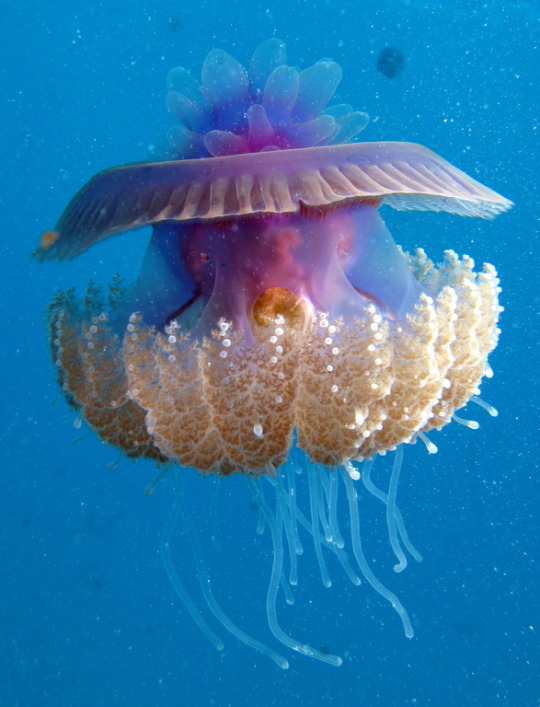

Scyphozoa. This class is known as the true jellyfish, with a planktonic medusa form and bottom-dwelling polyp form
Hydrozoa. This class is of predatory cnidarians, some of which are colonial, incllude hydras and the Portuguese Man o' War
#animals#biology#polls#poll tournament#zoology#jellyfish#cnidarians#hydras#portuguese man o'war#Scyphozoa#Hydrozoa#0xav0x75
163 notes
·
View notes
Text


Range: North, Black, Baltic, & Caspian Seas, Northeast Atlantic, & Northwest Pacific
41 notes
·
View notes
Text
Round 2.5 - Cnidaria - Scyphozoa

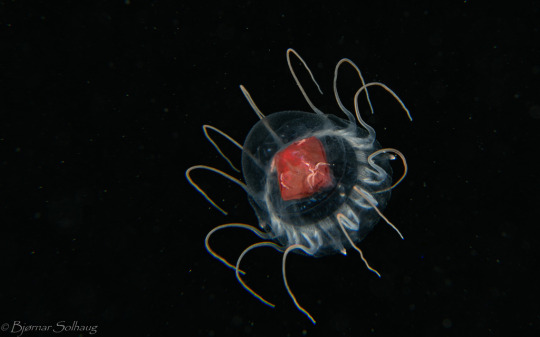
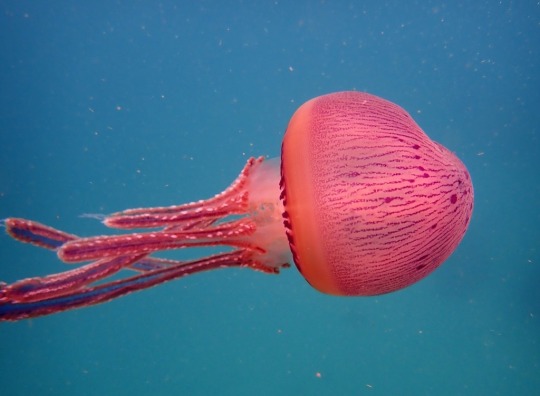

(Sources - 1, 2, 3, 4)
Scyphozoa is a marine class of cnidarians commonly referred to as “true jellyfish”, “jellyfish”, or simply “jellies”. They are composed of three living orders: Coronatae (“Crown Jellies”), Rhizostomeae (“Root-mouth Jellies”), Semaeostomeae (“Flag-mouth Jellies”).
Scyphozoans usually display a four-part symmetry and have an internal gelatinous material called mesoglea, consisting of as much as 98% water. A ring of muscle fibres within the mesoglea surrounds the rim of the dome, and the jellyfish swims by alternately contracting and relaxing these muscles. As medusae, they eat a variety of crustaceans and fish, which they capture using stinging cells called nematocysts. The nematocysts are located throughout the tentacles that radiate downward from the edge of the umbrella dome, and also cover the four or eight oral arms that hang down from the central mouth. Some species, however, are instead filter feeders, using their tentacles to strain plankton from the water. The mouth opens into a central stomach, from which four interconnected diverticula radiate outwards. Some genera also have smaller mouths in the oral arms. The lining of the digestive system includes further stinging nematocysts, along with cells that secrete digestive enzymes. The nervous system usually consists of a distributed net of cells, although some species possess more organised nerve rings. Some species also have pigment-cup ocelli, though they are not as advanced as Cubozoan eyes. Coronataens (ex: image 2) are characterized by a deep groove running around the umbrella, giving them the crown shape which gives them their name. Rhizostomeans (ex: image 1 and 3) do not have tentacles nor other structures branching off from the edges of the bell. Instead, they have eight highly branched oral arms which fuse together as they approach the central mouth of the jellyfish. Semaeostomeaens (ex: image 4 and gif below) have four long, frilly oral arms flanking their quadrate mouths, as well as tentacles.
Most species of Scyphozoa have two life-history phases, including the planktonic medusa or polyp form, and the inconspicuous, but longer-lived, bottom-dwelling polyp, which seasonally gives rise to new medusae. Most species appear to be gonochorists, with separate male and female individuals. The gonads are located in the stomach lining, and the mature gametes are expelled through the mouth. After fertilization, some species brood their young in pouches on the oral arms, but they are more commonly planktonic. The fertilized egg produces a planular larva which, in most species, quickly attaches itself to the sea bottom. The larva develops into the hydroid stage of the lifecycle, a tiny sessile polyp called a scyphistoma. The scyphistoma reproduces asexually, producing similar polyps by budding, and then either transforming into a medusa, or budding several medusae off from its upper surface via a process called strobilation. The medusae are initially microscopic and may take years to reach sexual maturity.
Scyphozoans have existed since the Early Cambrian.
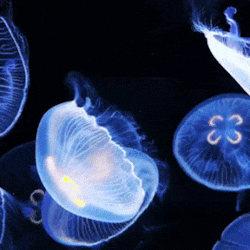
Propaganda under the cut:
The Lion’s Mane Jelly (Cyanea capillata) is one of the largest jellyfish, with the largest recorded specimen having a bell width of 210 cm (7 ft) and tentacles around 36.6 m (120 ft) long.
Jellyfish of the order Rhizostomeae are considered edible, both as a delicacy and for use in traditional medicine, and are eaten mainly in Asia, typically dried and/or salted.
The giant Nomura's Jellyfish (Nemopilema nomurai) can reach similar sizes to the Lion’s Mane Jellyfish, and their large size and quantity often negatively affects fisheries in East Asia. Aside from humans, their only predators are swordfish, tuna, sunfish, and leatherback sea turtles. A decrease in predators and an increase in favorable conditions and warming seas have caused an explosion in population, displaying that an increase in animal populations is not always a good sign! Scientists are studying their venom for use in medical applications, such as for treating joint disease and in cancer research. The Japanese company Tango Jersey Dairy also produces a vanilla and jellyfish ice cream using Nomura's Jellyfish.
While most jellies are exclusively marine, the Bay Nettle (Chrysaora chesapeakei) ventures into the Chesapeake Bay’s brackish water all the way up into the freshwater of Baltimore’s Inner Harbor.
The Giant Phantom Jelly (Stygiomedusa gigantea) is a deep sea jellyfish that is rarely seen, with only around 110 sightings in 110 years. It thought to be one of the largest invertebrate predators of the ocean's midnight zone and twilight zone, with an umbrella-shaped bell that can grow up to 1 m (3.3 ft) in diameter and paddle-like arms that can grow up to 10 m (33 ft) in length. The bell's pliant tissue allows for the jellyfish to stretch 4 to 5 times its size, presumably to engulf their prey. They do not have any stinging tentacles and instead use their arms to trap and engulf their prey which consists of plankton and small fish. The Giant Phantom Jelly has a symbiotic relationship with the Pelagic Brotula (Thalassobathia pelagica), for which it provides food and shelter beneath its massive billowing bell, while the fish aids the jelly by removing parasites.
The Mauve Stinger (Pelagia noctiluca) is a fairly small purple jellyfish that is able to glow in the dark (bioluminesce). Light is emitted in the form of flashes when the medusa is stimulated by turbulence created by waves or by a ship's motion. Unusually among cnidarians, Mauve Stingers are able to consume phytoplankton, alongside copepods and other usual planktonic fare.
The Moon Jelly (Aurelia aurita) (see gif above) is gaining popularity in aquarium touchtanks as they lack long tentacles and their sting has little to no affect on humans. They are also one of the longer-lived jellyfish, living up to two years in their medusa form, and are easy to rear and feed, making them a good candidate for giving humans an up-close learning experience with jellies.
Fun fact: my dad let me watch The Sphere (1998) when I was 7 and it gave me Scyphophobia, a fear of jellyfish, that lasted for several years. I knew the behavior of the jellyfish as depicted in the movie wasn’t real, but I still wouldn’t enter the ocean for the next 5 years, and when I did start entering the ocean again every time I saw a jellyfish I would get out and not go back in again for another full year. It took a touch tank and several positive experiences with some moon jellies to get over my fear, and now I would say I’m fully recovered!
100 notes
·
View notes
Text
Jellies are trending 🙌🏼
Everyone is familiar with the basic idea of a jellyfish, but what do we mean when we use that term? Jellies in the class Scyphozoa include most of the species that people think of when hearing the word “jellyfish.” Their life cycles typically include a polyp stage, attached to the bottom, that produces baby medusae. When conditions are right, these babies can grow up to form vast blooms of adult jellies. These "true jellies" are commonly studied at the sea surface, but those living deep in the water column are less well known. Some deep-sea jellies defy what we imagine when we think of jellyfish—some with bells that can stretch up to a meter across, others with no tentacles at all. Many species of swimming jellies are actually in another group called the Hydromedusae. These jellies are often small and transparent, ranging from very few to numerous tentacles. Some Hydromedusans have tentacles that point ahead of them instead of trailing behind them as they swim. These species eat other gelatinous organisms rather than the crustaceans favored by many of their cousins. Even with all this dazzling diversity, we have yet to encounter many of the delicate drifters that live in the deepest waters of our vast ocean.
761 notes
·
View notes
Text
youtube
Ghostly critter from the deep sea: Stygiomedusa gigantea
This ghostly giant is a rare sight.
Out of the darkness of the ocean’s midnight zone, MBARI’s remotely operated vehicle (ROV) Doc Ricketts spots a billowing crimson curtain. Moving in for a closer look, the submersible’s lights reveal the giant phantom jelly (Stygiomedusa gigantea). The bell of this deep-sea denizen is more than one meter (3.3 feet) across and trails four ribbon-like oral (or mouth) arms that can grow to more than 10 meters (33 feet) in length. MBARI’s ROVs have logged thousands of dives, yet we have only seen this spectacular species nine times. The first specimen of the giant phantom jelly was collected in 1899, but it was not until 60 years later that scientists recognized this as a new species. Even now, scientists still know very little about this animal. MBARI’s observations of Stygiomedusa gigantea have helped illuminate its ecological role in the ocean’s depths. During an expedition to the Gulf of California, MBARI’s ROV Tiburon recorded a fish—the pelagic brotula (Thalassobathia pelagica)—alongside a giant phantom jelly. Researchers watched the brotula hover above the bell of its host and swim in and out of the jelly’s voluminous oral arms. The wide-open waters of the midnight zone offer little shelter, so many creatures find refuge in the gelatinous animals that are abundant in this environment.
via: MBARI (Monterey Bay Aquarium Research Institute)
Family: Ulmaridae
Order: Semaeostomeae
Class: Scyphozoa
129 notes
·
View notes
Text
Today’s jellyfish is Stomolophus meleagris, commonly known as the Cannonball jellyfish or the Cabbagehead jellyfish. It is from the Scyphozoa class and is so named for how similar it is to a cannonball in shape and size.

Image source: https://ambergriscaye.com/photogallery/100429.html
15 notes
·
View notes
Note
Wh-what are those fuckass creatures in the banner?? What are they???
The animals in the profile picture are cats, felis catus.
The animals in the banner are jellyfish, Class Scyphozoa.
17 notes
·
View notes